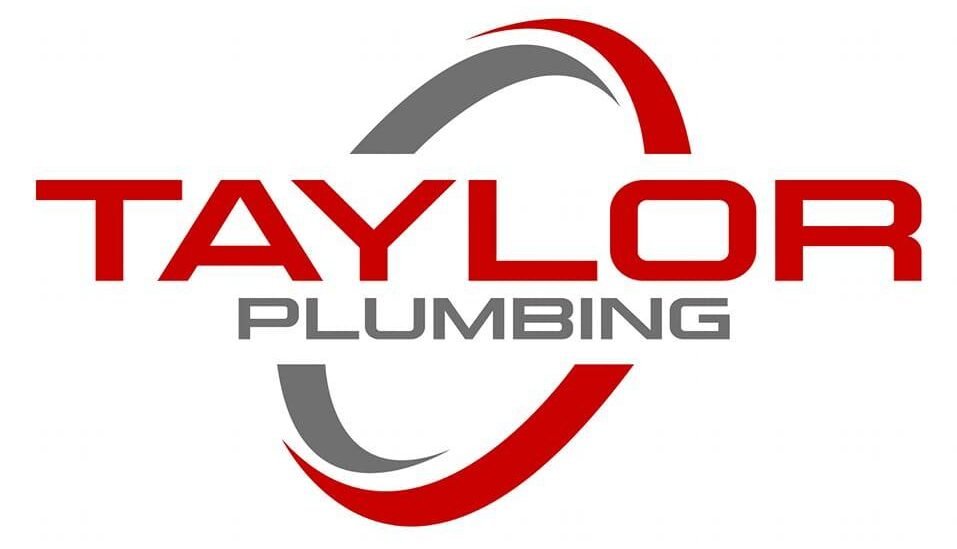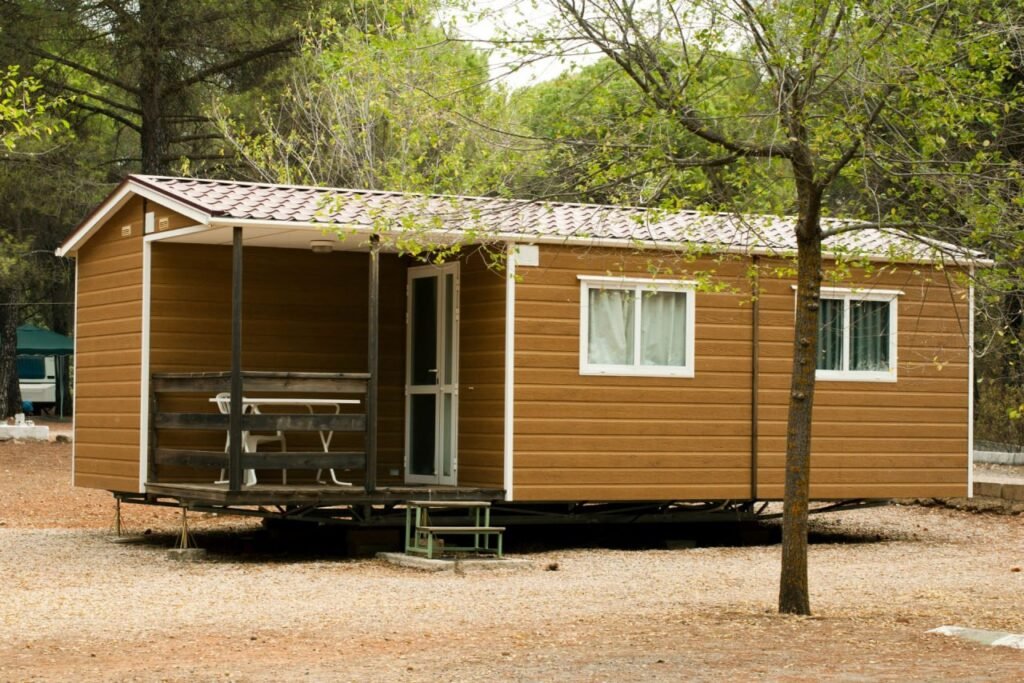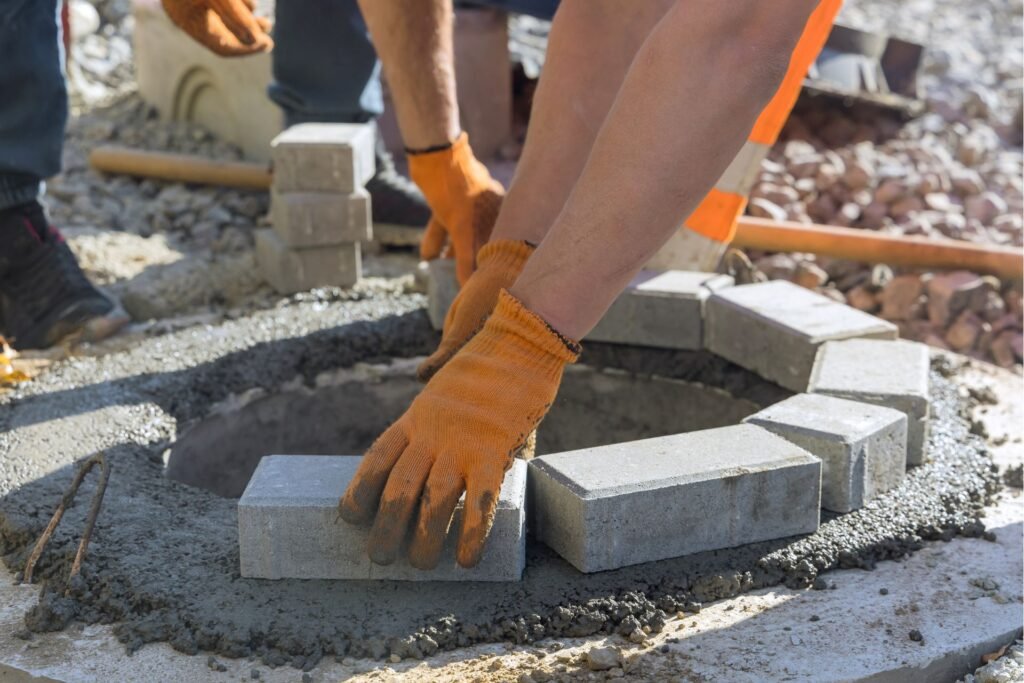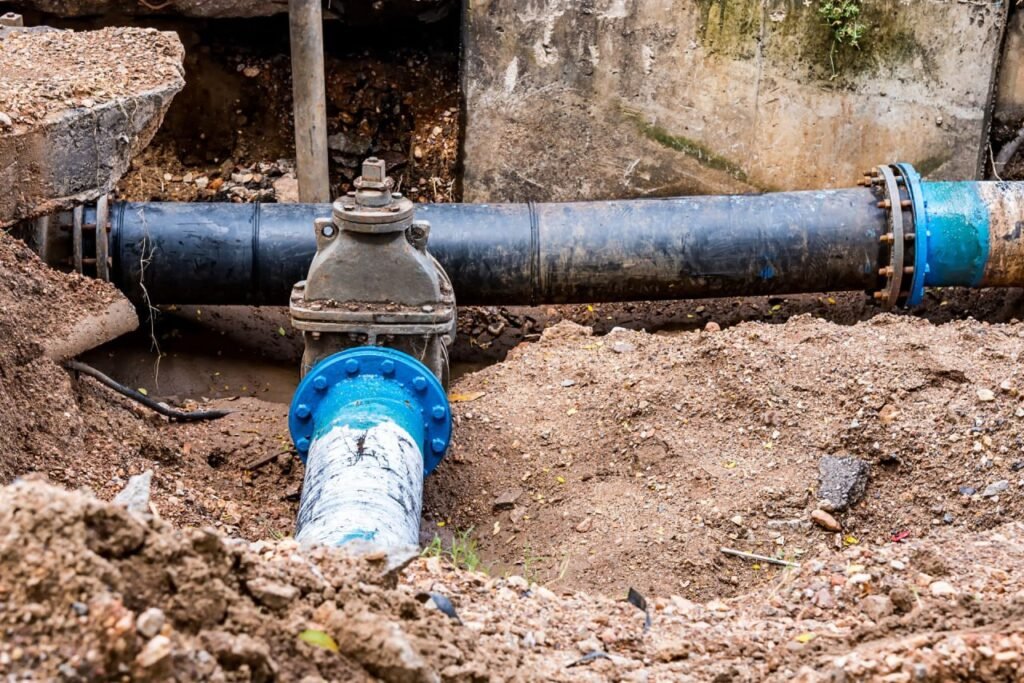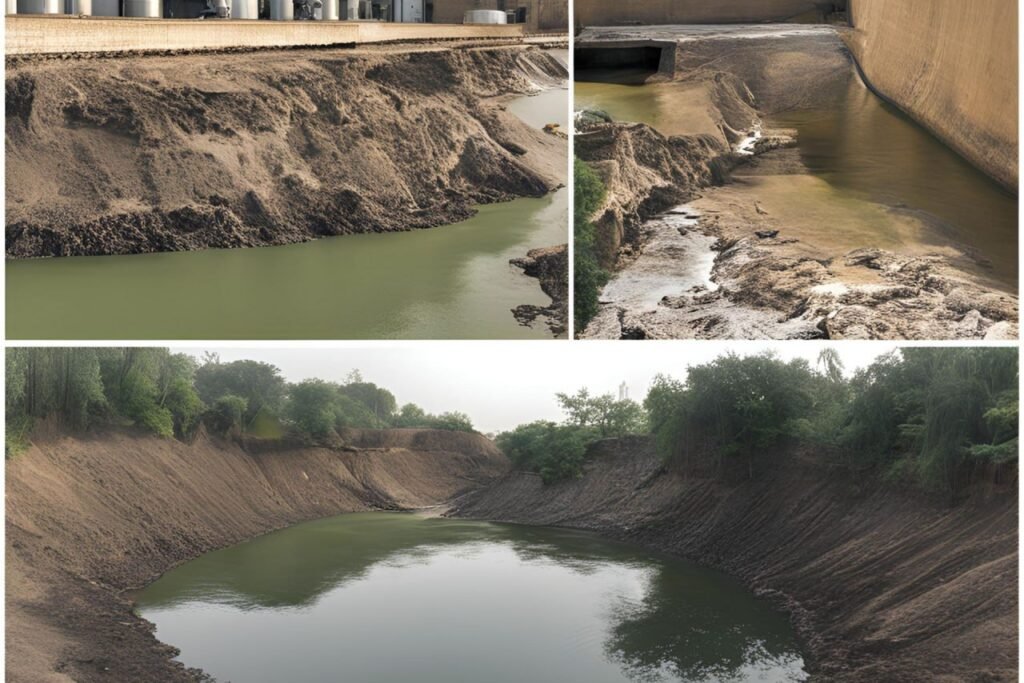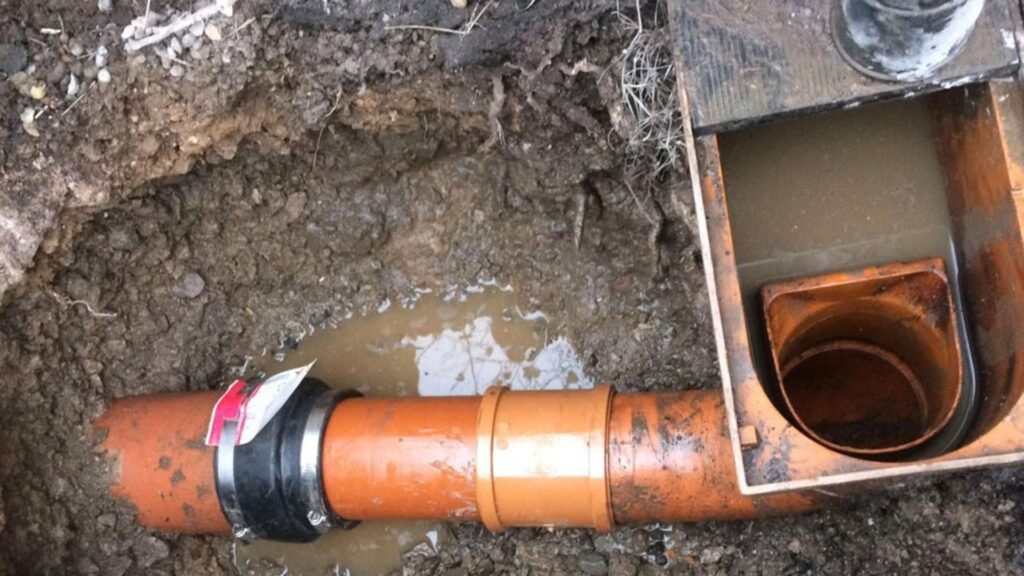Welcome to our comprehensive guide on how to live on-site while building your house in New Zealand. Whether you’re embarking on this journey to save costs, keep a close eye on the construction process, or simply embrace the adventure, this guide is here to help you navigate the unique challenges and rewards of living on a construction site. We’ll cover everything from setting up temporary accommodation and ensuring safety to managing daily living needs and maintaining your well-being, offering practical tips and real-life insights to make your experience as smooth and successful as possible.
Living on-site while building your house in New Zealand can be a cost-effective and efficient choice. To ensure a smooth experience, start by setting up a comfortable temporary accommodation, arranging for essential utilities, and prioritizing safety. Plan your construction timeline carefully, coordinate closely with your builders, and maintain a clean living environment. Managing daily tasks, such as cooking and laundry, requires creative solutions, and taking care of your mental well-being is crucial. By following these tips, you can successfully live on-site and keep your home-building project on track.
Preparing For The Move
Assessing the Feasibility
Before you embark on the exciting journey of building your new home, it’s crucial to assess the feasibility of living on-site during construction. This involves several key steps:
- Evaluating the Construction Timeline: Begin by discussing with your builder or contractor to get a realistic timeline for the construction project. Knowing how long each phase will take can help you plan your temporary living arrangements accordingly. Ask specific questions about potential delays and what contingencies are in place to handle them.
- Checking Local Regulations and Permissions: It’s essential to check with your local council or regulatory body about any permissions required for living on-site. Different regions have varying rules regarding temporary accommodations on construction sites. Ensure you comply with all regulations to avoid fines or disruptions. This might include obtaining permits or adhering to safety standards.
Setting Up Temporary Accommodation
Once you’ve established that living on-site is feasible, the next step is setting up temporary accommodation. There are several options to consider, each with its own set of advantages and disadvantages:
Types of Temporary Accommodations
- Caravans: Caravans are a popular choice for temporary housing. They are relatively affordable, mobile, and can be easily set up on your property.
- Mobile Homes: These offer more space and comfort compared to caravans. Mobile homes can be rented or purchased and provide a more home-like environment.
- Shipping Containers: Converted shipping containers are a durable and secure option. They can be customized to include necessary amenities and offer a unique living space.
- Tiny Homes: These small, fully functional homes are another great option. They provide all the necessities in a compact and efficient design.
Pros and Cons of Each Option
- Caravans: Pros include mobility and affordability. However, they might offer limited space and amenities.
- Mobile Homes: These provide more comfort and space but can be more expensive to rent or buy.
- Shipping Containers: Highly durable and customizable but might require significant initial setup.
- Tiny Homes: Compact and efficient, yet might have higher initial costs and limited space.
Utility Connections
Living on-site means you’ll need to arrange for essential utilities to ensure a comfortable stay. Here’s what you need to consider:
- Arranging for Temporary Water, Electricity, and Sewage Systems: Contact local utility providers to set up temporary connections for water, electricity, and sewage. This might involve installing temporary power poles, water tanks, and portable toilets or sewage systems. Make sure to discuss these needs with your builder as they might have preferred suppliers or solutions.
- Cost Considerations and Potential Challenges: Budget for the costs associated with setting up temporary utilities. These can include connection fees, equipment rentals, and ongoing usage charges. Additionally, be prepared for potential challenges such as delays in setup, higher-than-expected costs, or technical issues. It’s a good idea to have a backup plan in place, such as a generator for power or additional water storage, to handle any unforeseen issues.
By carefully preparing for the move and addressing these key areas, you can ensure a smoother transition to living on-site during your home’s construction. This proactive approach will help you stay organized, compliant, and comfortable throughout the building process.

Planning The Construction Timeline
Planning a construction timeline is crucial for ensuring a smooth and efficient building process. By focusing on prioritizing key areas and coordinating effectively with builders and contractors, you can minimize disruptions and keep the project on track. Here’s a detailed explanation of how to approach this section of your construction project:
Prioritizing Key Areas
Setting Up Essential Areas First
When planning your construction timeline, it’s essential to identify and set up critical areas first. The kitchen, bathroom, and sleeping area should be prioritized to ensure that the most vital parts of the home are functional as soon as possible. This approach allows you to maintain a degree of normalcy and convenience even as other parts of the construction are ongoing.
Phased Construction Planning
Implementing a phased construction plan can help in managing the project more efficiently. This involves breaking down the construction process into manageable phases, focusing on one area at a time. For example, you can start with the essential areas mentioned above, and then move on to less critical parts of the house, such as living rooms, offices, or recreational spaces. Phased planning helps in keeping the project organized and reduces the likelihood of overwhelming both the builders and the homeowners.
Coordination with Builders and Contractors
Regular Communication and Planning Meetings
Effective coordination with your builders and contractors is vital for a successful construction project. Regular communication and planning meetings ensure that everyone is on the same page and any potential issues are addressed promptly. These meetings provide an opportunity to review the progress, discuss any changes or adjustments needed, and plan the upcoming phases of the project. Keeping the lines of communication open helps in maintaining a collaborative and proactive approach to the construction.
Managing Construction Schedules to Minimize Disruption
One of the primary goals in construction planning is to minimize disruption to your daily life. This can be achieved by carefully managing construction schedules. Work closely with your builders and contractors to create a realistic timeline that accounts for potential delays and challenges. By planning work during times when it will cause the least disruption and ensuring that essential areas are completed first, you can maintain a level of comfort and functionality in your home throughout the construction process.
In conclusion, planning the construction timeline is a strategic process that involves prioritizing essential areas and coordinating effectively with your builders and contractors. By setting up critical areas first and implementing phased construction planning, you can ensure a smooth and efficient building process. Regular communication and careful management of construction schedules are key to minimizing disruption and keeping your project on track.

Ensuring Safety And Security
When you’re living on-site while your house is being built, ensuring safety and security becomes paramount. It’s crucial to create a secure environment to protect your family, pets, and the construction site itself from potential hazards and unwanted incidents. Here’s how you can effectively manage construction site safety and site security:
Construction Site Safety
Essential Safety Gear and Practices for Residents
Living on a construction site means you need to be extra cautious. Wearing the right safety gear is non-negotiable. This includes helmets, safety boots, high-visibility vests, and protective eyewear. Always be aware of your surroundings, avoid areas where heavy machinery is operating, and to minimize risks:
- Establish designated safe zones where family members can stay without worrying about accidental harm.
- Clear communication with the construction crew is vital. Make sure everyone is aware of each other’s presence and activities.
- Regularly inspect the site for hazards such as loose materials, exposed nails, and unstable structures. Address these issues promptly to prevent accidents.
Keeping Children and Pets Safe On-Site
Children and pets are naturally curious, which can lead to dangerous situations on a construction site. Here’s how to keep them safe:
- Set clear boundaries and explain the dangers to older children. Ensure they understand which areas are off-limits.
- For younger children and pets, create a secure, fenced-off area where they can play safely without wandering into hazardous zones.
- Supervise children and pets closely. Never leave them unattended near construction activities.
Site Security
Securing the Construction Site from Theft and Vandalism
Construction sites can be targets for theft and vandalism, given the valuable materials and equipment present. Implementing robust security measures is essential:
- Store tools and materials in locked containers or buildings. This not only prevents theft but also keeps the site tidy and reduces tripping hazards.
- Keep an inventory of all materials and equipment, checking regularly to ensure nothing is missing.
Installing Temporary Fencing and Surveillance
Physical barriers and surveillance systems are effective deterrents against unauthorized access:
- Install temporary fencing around the entire construction site. This creates a clear boundary and helps keep out intruders.
- Use signage to indicate that the area is under surveillance and that unauthorized entry is prohibited. This can discourage potential thieves or vandals.
- Set up security cameras at key points around the site. Modern systems can provide real-time monitoring and alerts, allowing you to respond quickly to any suspicious activity.
- Consider hiring security personnel for larger projects or particularly vulnerable sites. Their presence can further enhance the security of the area.
By following these guidelines, you can ensure that your construction site remains a safe and secure place for everyone involved. Taking proactive steps to manage safety and security will not only protect your investment but also provide peace of mind during the building process.

Daily Living Tips
Living on-site while building your house can be an adventure, but it also requires some strategic planning to ensure daily life remains comfortable and functional. Here are some practical tips to help you manage cooking, sanitation, hygiene, and laundry during this transitional period.
Cooking and Meal Planning
Setting Up a Temporary Kitchen
Creating a temporary kitchen space is essential for preparing meals while your permanent kitchen is being built. Start by selecting a well-ventilated area, ideally close to your water and power sources. Invest in portable appliances such as a camping stove, microwave, and mini-fridge. Arrange a sturdy table for food preparation and storage bins for keeping your utensils and non-perishable food items organized. Keep things simple and organized to make cooking less of a hassle.
Easy and Practical Meal Ideas for Limited Facilities
Cooking in a temporary setup doesn’t have to mean sacrificing delicious meals. Opt for one-pot recipes, which minimize cleanup and equipment needs. Think about hearty soups, stews, and pasta dishes. You can also prepare meals in bulk to save time; dishes like chili, casseroles, and stir-fries can be cooked in larger quantities and stored for later use. Don’t forget about easy-to-make salads and sandwiches for quick, nutritious options.
Sanitation and Hygiene
Temporary Bathroom Solutions
Maintaining sanitation is crucial when living on-site. If your permanent bathroom isn’t ready yet, consider renting a portable toilet. Modern porta-potties are quite advanced and can be a convenient solution. For showering, portable camping showers or solar showers can be quite effective. These can be set up in a private, enclosed area to ensure you maintain personal hygiene without too much inconvenience.
Maintaining Hygiene Standards in a Construction Environment
Construction sites can be dusty and dirty, but maintaining hygiene is essential. Keep hand sanitizer and wet wipes handy for quick cleanups. Designate a specific area for washing hands and face, using either a portable sink or a simple basin setup. Regularly clean the living and cooking areas to prevent the buildup of dirt and germs. Wearing appropriate clothing and personal protective equipment can also help reduce exposure to dust and debris.
Laundry and Cleaning
Managing Laundry Without a Permanent Setup
Without a permanent laundry setup, you’ll need to be resourceful. Handwashing clothes in a large tub can be a practical solution. If possible, invest in a portable washing machine designed for camping. To dry your clothes, use a collapsible drying rack or a simple clothesline. Schedule regular laundry days to prevent a pileup of dirty clothes, ensuring you have clean garments ready when needed.
Keeping the Living Area Clean and Organized
A clean and organized living space is vital for comfort and sanity. Allocate specific areas for different activities, such as cooking, sleeping, and relaxing, to keep everything in order. Use storage bins and portable shelves to manage your belongings efficiently. Regularly sweep and wipe down surfaces to keep the area free from dust and clutter. By maintaining a routine cleaning schedule, you can ensure that your temporary living space remains livable and pleasant throughout the construction process.
Living on-site while building your house requires some adjustments, but with these tips, you can maintain a comfortable and organized daily life. Planning your temporary kitchen, ensuring proper sanitation, managing laundry, and keeping your living area clean will help you navigate this phase smoothly.

Managing Stress And Maintaining Well-being
Building your own house is an exciting journey, but it can also be a source of significant stress and fatigue. It’s crucial to prioritize your well-being during this time. Here are some strategies to help manage stress and maintain your well-being throughout the building process.
Creating a Comfortable Living Environment
Even if your living situation is temporary, making it feel like home can have a positive impact on your overall well-being. Here are some tips to create a comfortable living environment:
Tips for Making Temporary Accommodation Feel Like Home
- Bring Familiar Items: Surround yourself with personal items such as photos, favorite books, and cozy blankets. These small touches can make a big difference in how comfortable and familiar your temporary space feels.
- Organize Efficiently: Keep your space organized to reduce stress and make daily living easier. Use storage solutions like bins and shelves to keep things tidy and accessible.
- Enhance Comfort: Invest in comfortable bedding and seating. A good night’s sleep and a relaxing place to sit can significantly improve your mood and energy levels.
Personalizing the Space
- Decorate with Intention: Add personal touches like plants, artwork, and decorations that reflect your style and personality. This can make the space feel uniquely yours and boost your sense of belonging.
- Create Cozy Corners: Designate areas for relaxation, such as a reading nook or a comfortable spot for watching TV. These cozy corners can provide a retreat from the hustle and bustle of the building process.
Mental and Emotional Health
Taking care of your mental and emotional health is essential. Here are some strategies to help you cope with stress and fatigue:
Coping Strategies for Stress and Fatigue
- Practice Mindfulness: Mindfulness techniques, such as meditation and deep breathing exercises, can help you stay present and reduce anxiety. Even a few minutes a day can make a difference.
- Stay Active: Regular physical activity can boost your mood and energy levels. Whether it’s a morning jog, yoga, or a walk around the neighborhood, find an activity that you enjoy and make it a part of your routine.
Importance of Taking Breaks and Leisure Time
- Schedule Downtime: Make sure to schedule regular breaks throughout your day. Short breaks can help you recharge and prevent burnout.
- Engage in Hobbies: Pursue activities that bring you joy and relaxation. Whether it’s reading, gardening, or cooking, engaging in hobbies can provide a much-needed mental break from the building process.
Staying Connected with the Community
Maintaining a sense of community can provide emotional support and reduce feelings of isolation. Here are some ways to stay connected:
Engaging with Neighbors and the Local Community
- Introduce Yourself: Take the time to introduce yourself to your neighbors. Building a rapport can lead to friendships and a support network.
- Participate in Community Events: Attend local events and gatherings to meet new people and stay engaged with the community. This can provide a sense of normalcy and fun.
Utilizing Local Resources and Support Networks
- Seek Local Services: Utilize local resources such as libraries, community centers, and support groups. These services can offer practical assistance and social opportunities.
- Connect Online: Join local social media groups or online forums related to your area. These platforms can provide valuable information and a sense of connection with others going through similar experiences.
By creating a comfortable living environment, prioritizing your mental and emotional health, and staying connected with your community, you can manage stress and maintain well-being throughout the building process. Remember, taking care of yourself is not just important for your health but also for ensuring a smoother and more enjoyable building journey.

Financial Considerations
When embarking on the journey of building your dream home, financial considerations play a crucial role. It’s not just about the construction costs; you also need to account for the expenses related to your temporary living arrangements. Here, we’ll delve into effective budgeting strategies and practical saving tips to ensure your finances remain on track throughout the construction period.
Budgeting for Temporary Living Costs
Estimating Costs for Temporary Accommodation and Utilities
One of the first steps in managing your finances during the construction phase is to estimate the costs associated with temporary accommodation and utilities. This includes renting a place to stay, paying for utilities such as electricity, water, and internet, and other living expenses. The cost of temporary accommodation can vary widely depending on your location, the duration of the construction, and your personal preferences.
To get a clear picture, start by researching rental prices in your area. Look for affordable options like short-term rentals, extended-stay hotels, or even staying with family or friends if possible. Don’t forget to factor in utility costs, which can add up quickly. Creating a detailed spreadsheet to track these expenses will help you stay organized and prepared.
Unexpected Expenses and Contingency Planning
No matter how well you plan, unexpected expenses are bound to arise during the construction process. These could range from delays in the construction schedule to unforeseen issues like weather damage or additional building requirements. It’s essential to have a contingency fund set aside to cover these unexpected costs.
A good rule of thumb is to allocate at least 10-15% of your total budget for contingencies. This cushion will provide you with peace of mind and ensure that you can handle any surprises without derailing your entire project. Regularly review and adjust your budget as needed to accommodate any changes or additional expenses.
Saving Tips
Ways to Cut Costs During the Construction Period
Saving money during the construction period is not only possible but also highly advisable. Here are some practical tips to help you cut costs:
1. Shop Around for Materials: Compare prices from different suppliers and look for sales or discounts on building materials. Buying in bulk can also save you a significant amount of money.
2. Hire Local Contractors: Local contractors often charge lower rates and have a better understanding of the local building codes and regulations, which can prevent costly mistakes and delays.
3. Opt for Energy-Efficient Solutions: Investing in energy-efficient appliances and building materials might have a higher upfront cost, but they can save you money in the long run by reducing your utility bills.
4. Reuse and Recycle: If you have existing materials or fixtures that can be reused, don’t hesitate to incorporate them into your new home. Recycling and repurposing can significantly reduce your expenses.
DIY Projects and Cost-Effective Solutions
Taking on some DIY projects can be a great way to save money and add a personal touch to your new home. However, it’s important to assess your skills and the complexity of the project before diving in. Simple tasks like painting, landscaping, or installing fixtures can be manageable for many homeowners and can lead to substantial savings.
For more complex projects, consider partnering with friends or family members who have relevant skills. Additionally, look for cost-effective solutions that don’t compromise on quality. For instance, consider using alternative building materials that offer the same durability and aesthetic appeal at a lower cost.
In conclusion, careful financial planning and strategic saving measures are essential for managing the costs associated with building a new home. By budgeting for temporary living expenses, preparing for unexpected costs, and finding ways to cut expenses during construction, you can ensure that your project stays on track financially. Remember, every dollar saved during the construction phase can be put towards enhancing the beauty and comfort of your new home.

Real-Life Experiences
Living on-site while building your house can be an incredibly rewarding yet challenging experience. To give you a well-rounded perspective, we’ve gathered real-life stories and expert opinions that offer invaluable insights and practical advice.
Case Studies and Testimonials
Stories from New Zealanders who have lived on-site during construction
When it comes to building a home, there’s no better way to understand the process than by hearing directly from those who have been through it. We’ve compiled stories from New Zealanders who chose to live on-site during their home construction. These firsthand accounts reveal the day-to-day realities, from the excitement of seeing your dream home take shape to the hurdles and unexpected challenges that can arise.
One such story comes from the Johnson family in Wellington. They decided to live in a temporary structure on their property while their home was being built. For them, the proximity to the construction site allowed for hands-on oversight and quicker decision-making. They share how they managed their daily routines amidst the construction noise and dust, and how being close to the action helped them catch potential issues early, saving time and money.
Another compelling story is from Mark and Sarah in Auckland, who lived in a caravan on-site. They talk about the sense of adventure and the deep connection they felt to their property. However, they also highlight the importance of having a well-thought-out plan for utilities and managing the stress of living in a confined space.
Lessons learned and practical advice
These real-life experiences offer a wealth of lessons and practical advice. One common theme is the importance of clear communication with your builders. Many homeowners found that being on-site allowed for more frequent and effective communication, which helped in addressing issues promptly.
Another critical piece of advice is to have a contingency plan. Construction projects often encounter delays, and having an alternative living arrangement can save you a lot of stress. Moreover, investing in a comfortable temporary living setup can make a significant difference in your overall experience.
Expert Opinions
Insights from builders, architects, and project managers
To complement the personal stories, we sought insights from professionals in the field. Builders, architects, and project managers have a wealth of experience and knowledge that can help make your on-site living experience smoother.
Architect John Smith emphasizes the importance of planning and flexibility. He advises homeowners to work closely with their builders to develop a realistic timeline and to be prepared for adjustments. According to John, having a detailed and flexible plan can help mitigate some of the stress and unpredictability of living on-site.
Builder Maria Thompson shares her perspective on the benefits of homeowners being present during construction. She notes that clients who live on-site often have a better understanding of the progress and can make more informed decisions. Maria also highlights the importance of setting boundaries to ensure that both the construction team and the homeowners can coexist harmoniously.
Professional tips for a smoother experience
From the experts’ point of view, several tips can help make the experience of living on-site during construction more manageable. First, setting up a designated living area that is safe and somewhat removed from the main construction zone is crucial. This separation can provide a necessary respite from the noise and activity of the building process.
Second, maintaining a clear line of communication with your construction team is vital. Regular meetings to discuss progress, address concerns, and plan can prevent many common issues.
Lastly, staying flexible and patient is key. Construction projects rarely go exactly as planned, and being adaptable can help you navigate any challenges that arise more smoothly.
By combining real-life experiences with expert advice, you can gain a comprehensive understanding of what it’s like to live on-site during your home construction. This knowledge can empower you to make informed decisions, set realistic expectations, and ultimately enjoy the journey of building your dream home.

FAQs: About How To Live On-Site While Building Your House NZ
Conclusion
We’ve explored the key aspects of living on-site while building your house, including the practical benefits, potential challenges, and essential tips to make the process smoother. By weighing the convenience of being directly involved in the construction against the discomforts of a temporary living setup, you can make a more informed decision. For those considering this option, ensure you have a robust plan for utilities, safety, and daily routines to maintain a balance between project management and personal comfort. We’d love to hear about your experiences or any questions you might have feel free to share your thoughts in the comments below.
About the Author:
Mike Veail is a recognized digital marketing expert with over 6 years of experience in helping tradespeople and small businesses thrive online. A former quantity surveyor, Mike combines deep industry knowledge with hands-on expertise in SEO and Google Ads. His marketing strategies are tailored to the specific needs of the trades sector, helping businesses increase visibility and generate more leads through proven, ethical methods.
Mike has successfully partnered with numerous companies, establishing a track record of delivering measurable results. His work has been featured across various platforms that showcase his expertise in lead generation and online marketing for the trades sector.
Learn more about Mike's experience and services at https://theleadguy.online or follow him on social media:
